Tsukiji market
When we arranged for a guided visit to the Tsukiji market we had in mind that we were going to visit the biggest fish market in the world, but we had no clue of exactly how big it really was.
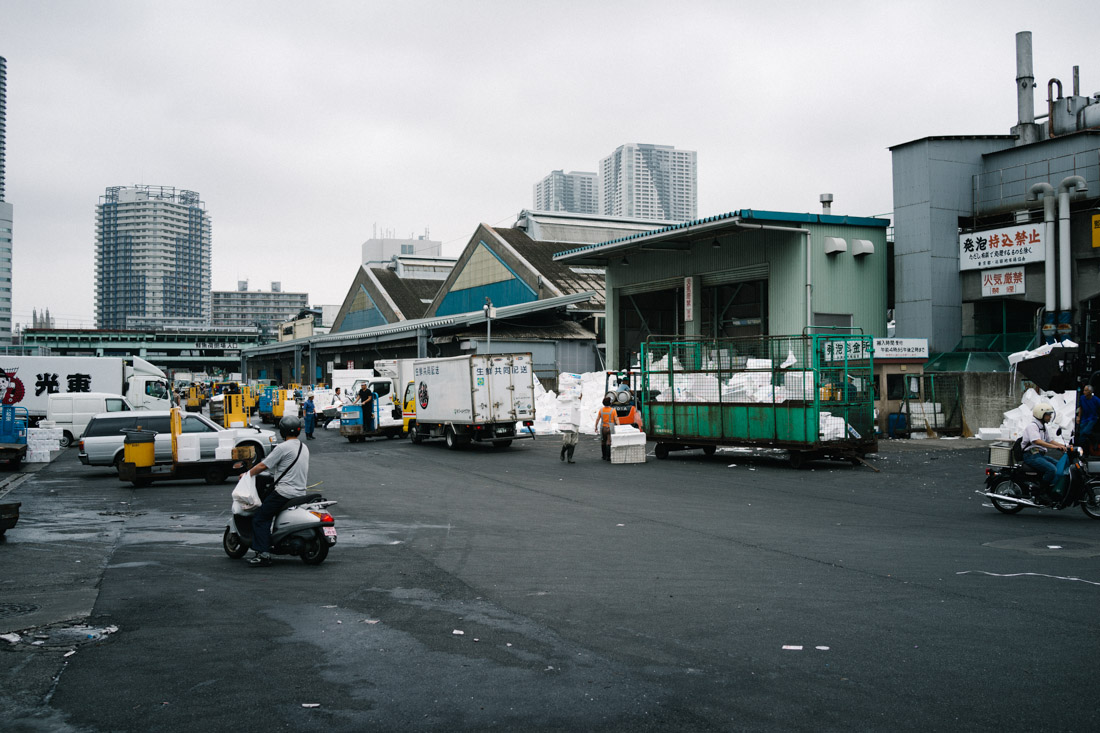
First look at the inner market. You can’t tell by this picture, but you really have to dodge all kinds of motorized vehicles.
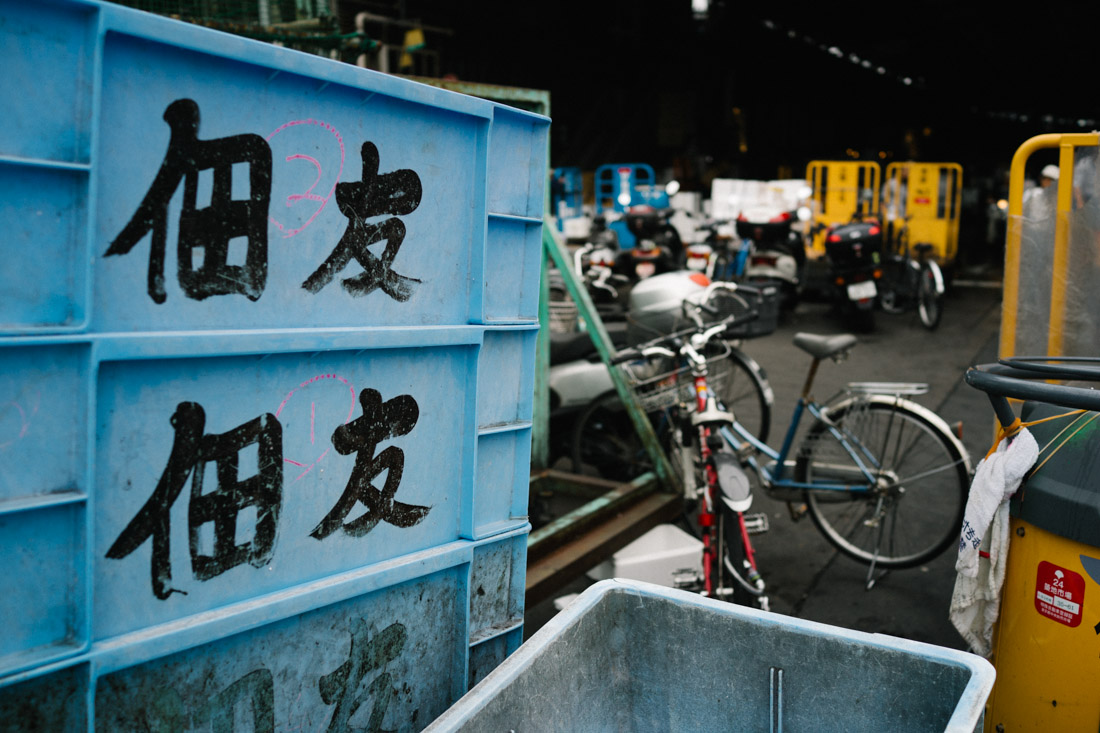
Styrofoam crates are much preferred to plastic ones.

Here you can see the stands numbering system.
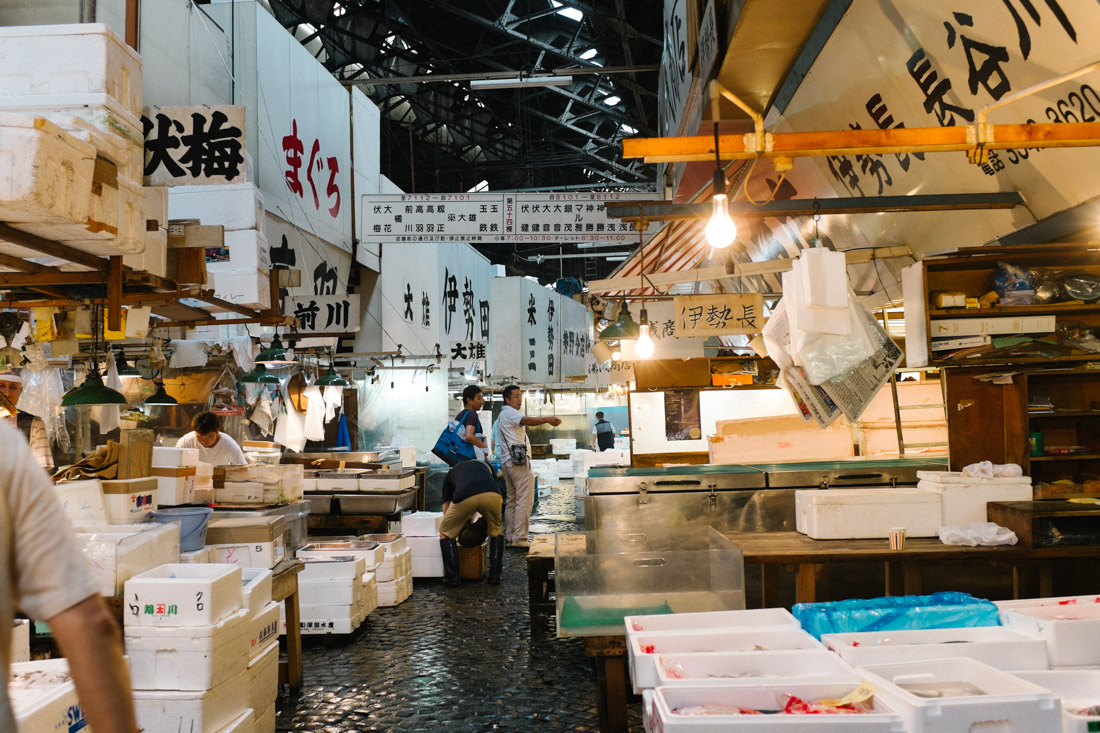
There’s an underlying order to all the chaos.
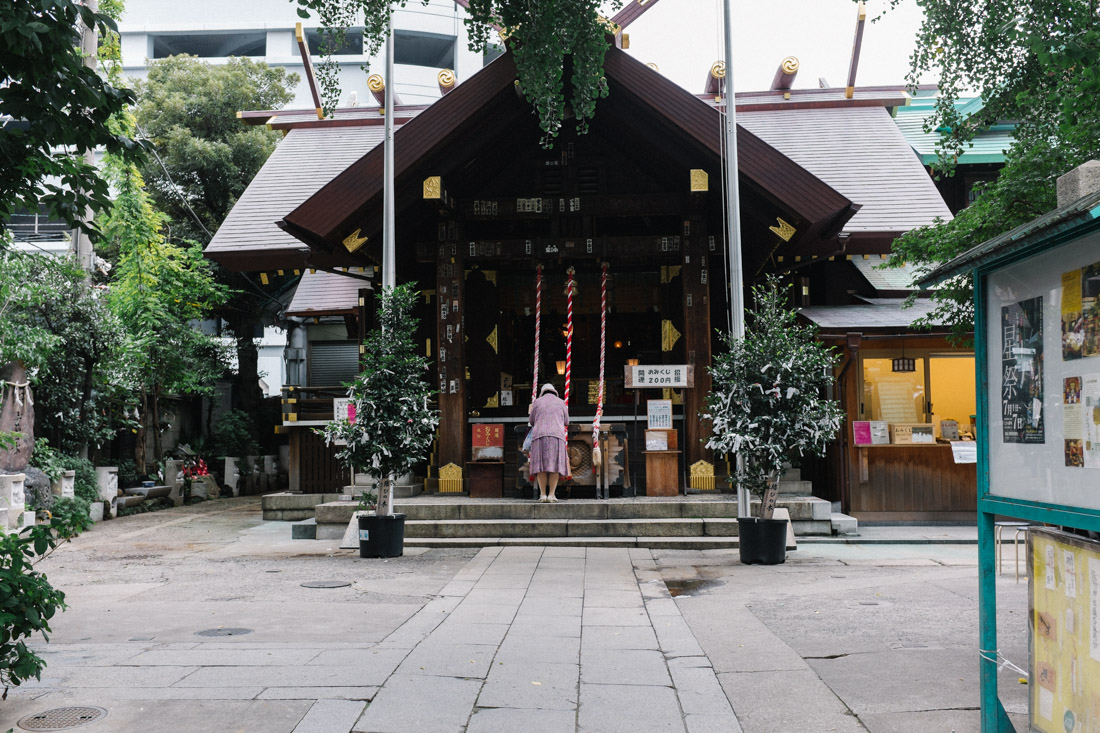
Namiyoke Inari Shrine at the inner market entrance. Dealers come here to pray for good food. There’s an altar for almost every species.
The whole experience was absolutely unique. The Tsukiji market is not just a fish market, it has everything and anything you can imagine. It’s a city within a city, fully equipped with its own set of rules, lingo, vehicles, restaurants and more.
The market consists of two parts: the inner market, that consists of the fish market itself, along with the vegetables and fruits section; then there’s the outer part that has a few restaurants, street food stalls, freshly made noodles that you can take home, tea herbs, different kinds of seasoning made with very tiny shrimp, flavored sea weeds, and cooking and cleaning utensils.

You can tell stand owners really respect the products. Here, one cleans off the moisture obsessively.
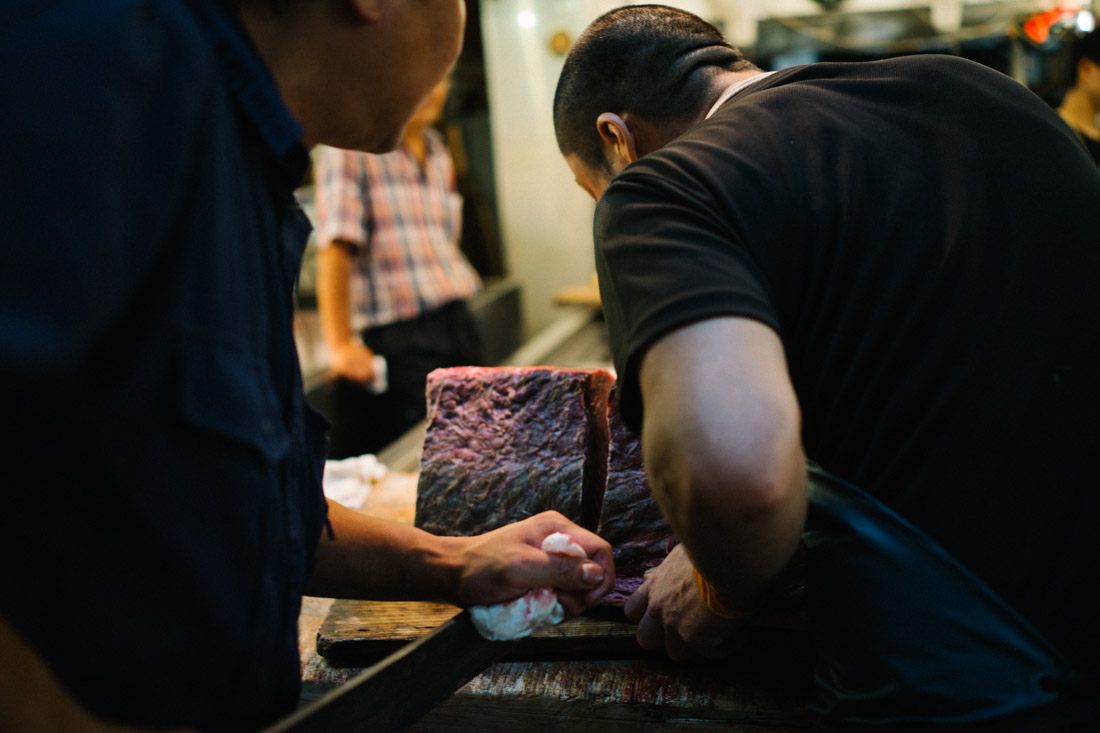
Cutting a tuna portion. It started as a two-man job, but soon another joined in.
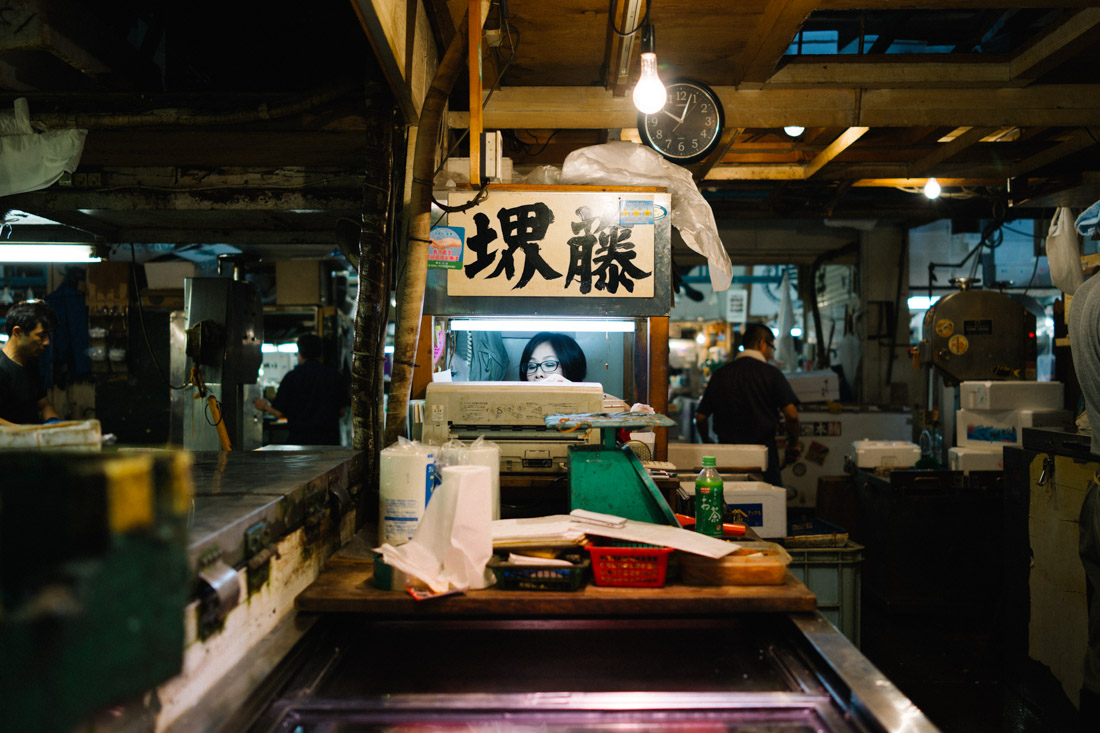
Dealers aren’t allowed to touch any money so each stall has its own cashier; it’s always a woman.

This work table tells stories by itself.

Ta-re also get a lot of attention.
The fish market itself is a maze with 10 endless rows of sea products, and one would imagine it would smell, well, fishy. But no smell was coming from the fish, and the floors and tables were clean and taken care of, mainly due to very strict health and safety regulations. The place, like all of Japan, is quite organized, and even the guys with ta-re — motorized trolleys — who seem to drive them crazily have an exact aim and schedules to meet.
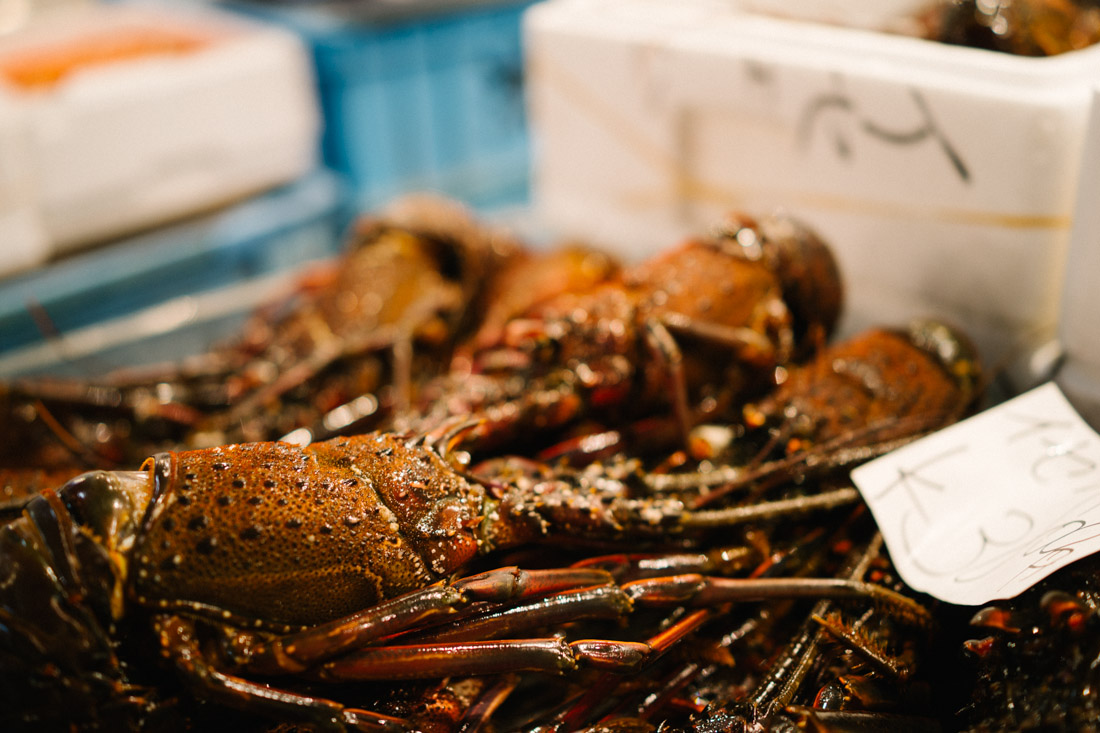
Japanese lobster with no claws.

Freshly caught and killed fish.
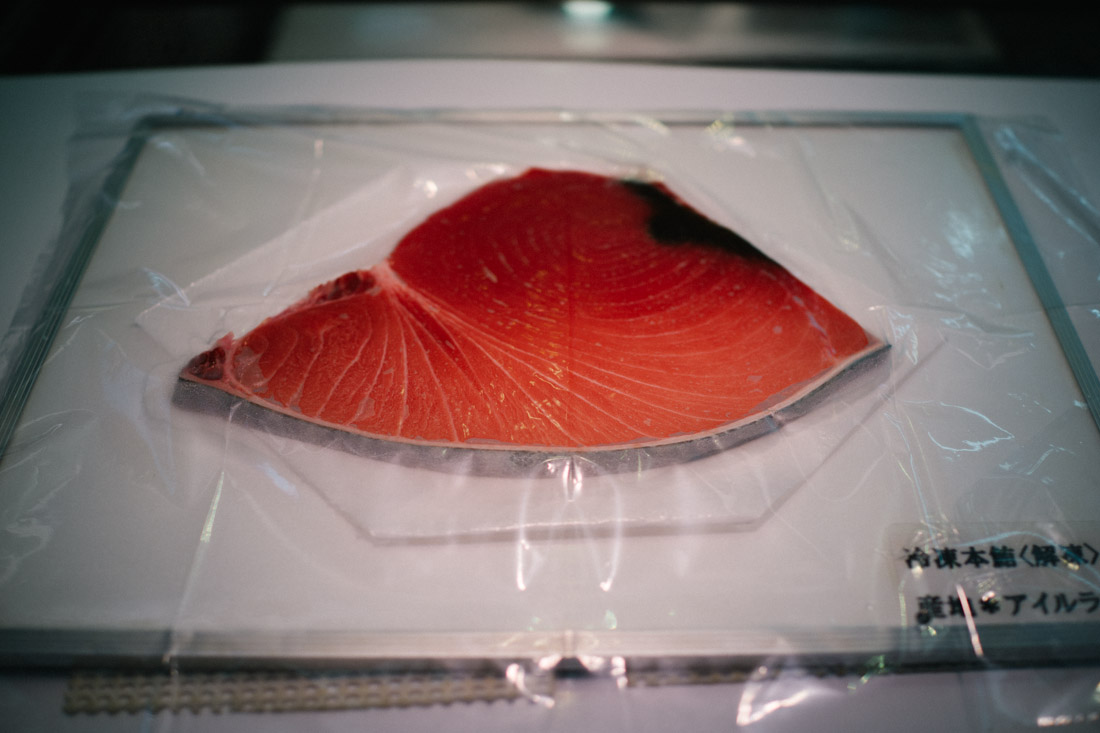
Tuna sample for buyers to see coloring and fat content — the fatter, the tastier, the better.
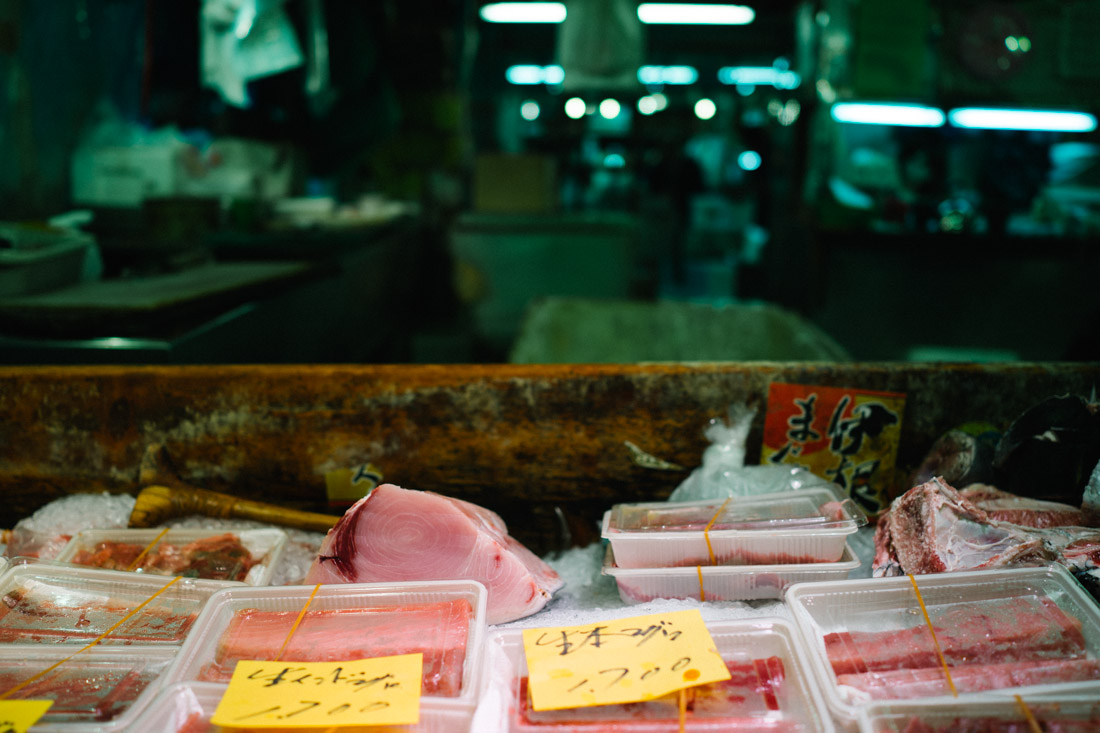
This is rare, but some dealers pack their products.
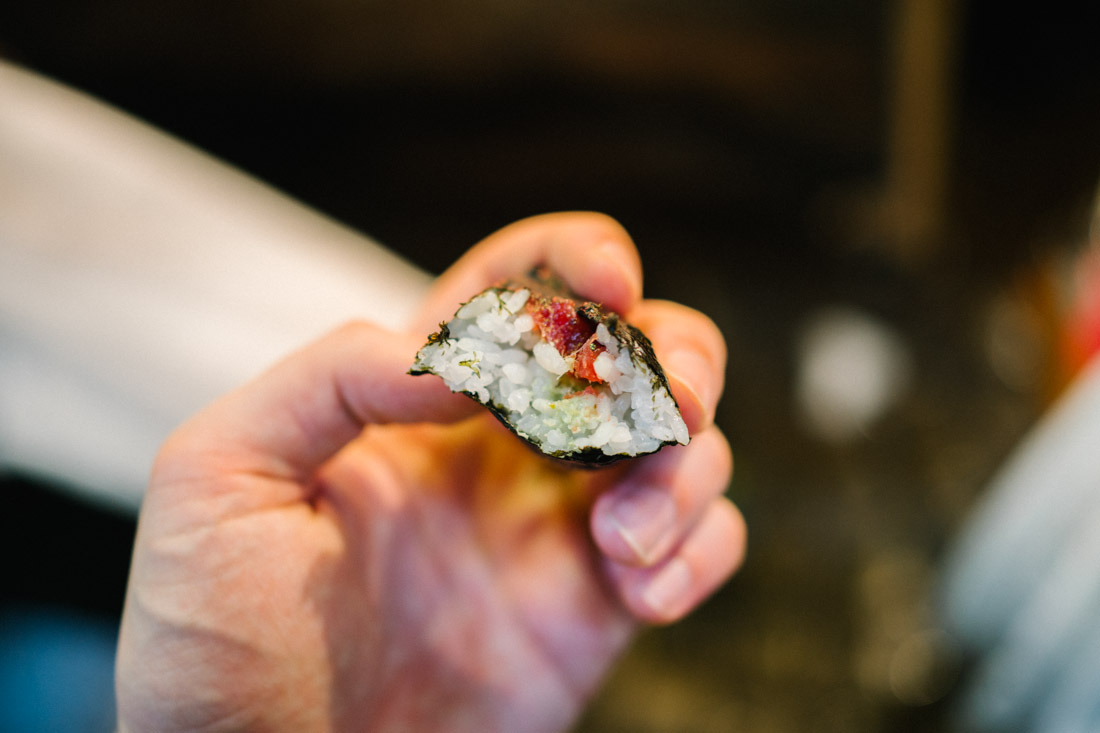
Tuna sushi roll, freshest we’ve tasted ever.

Good looking octopus.

Japanese crabs.
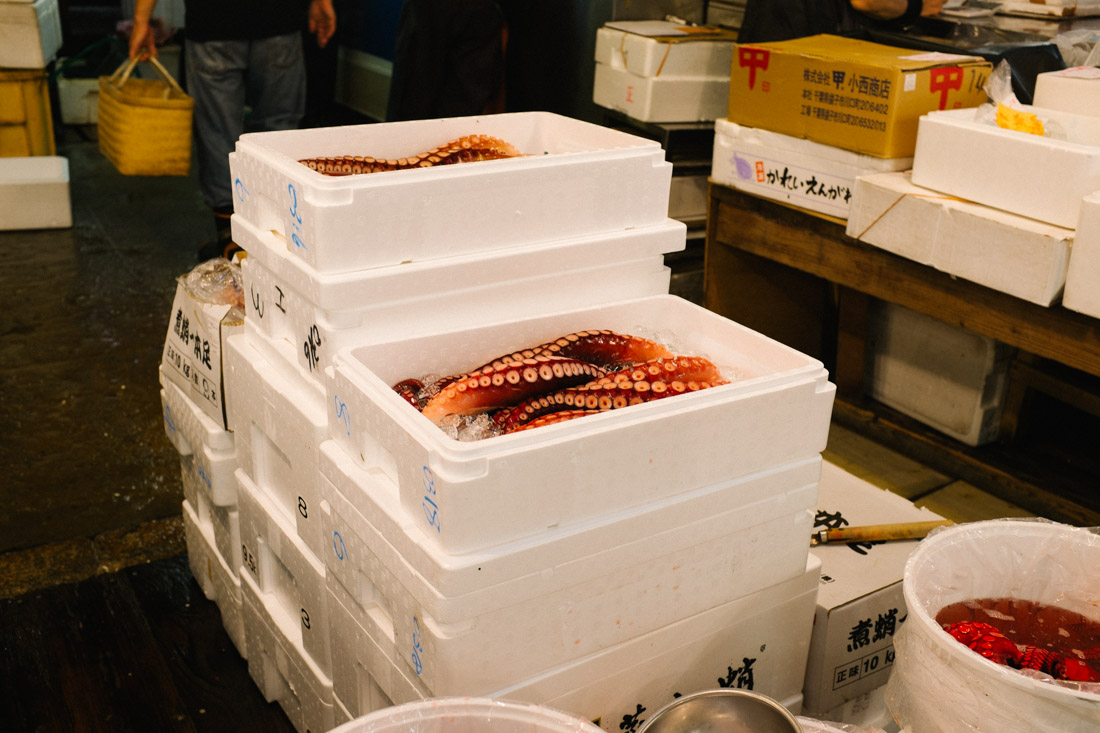
Octopus legs already boxed and ready to be shipped.
Surprisingly, most of tuna sold on a given day was, more often than not, caught in Spain, Italy, Ireland or Turkey. It’s insane to think that they would bring fish over here just to have them bid on and later reshipped to the countries of origin, or maybe it’s the most well thought out price inflation system ever, but now you know why good sashimi/sushi is so expensive.
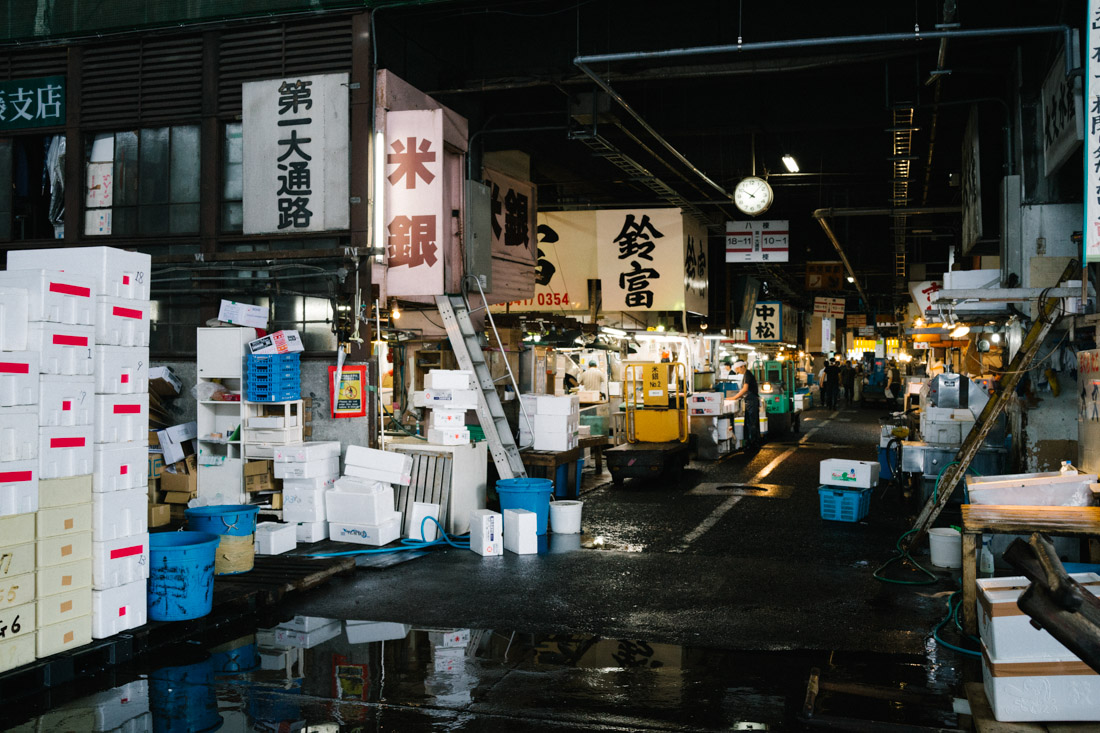
Heading out of the market, it’s an infinite maze.

Old carts that were replaced by the ta-re. They still last because older guys still prefer them and there are areas so narrow than even the ta-re can’t get in.

No time to sit down and take a break.
It was also interesting to learn they have a transformation plant inside the inner market to process all the styrofoam boxes they go through each day — more than 2 tons! The recycled product is not reused for food products, again, for health reasons, so they’re repurposed as toys or CD boxes.
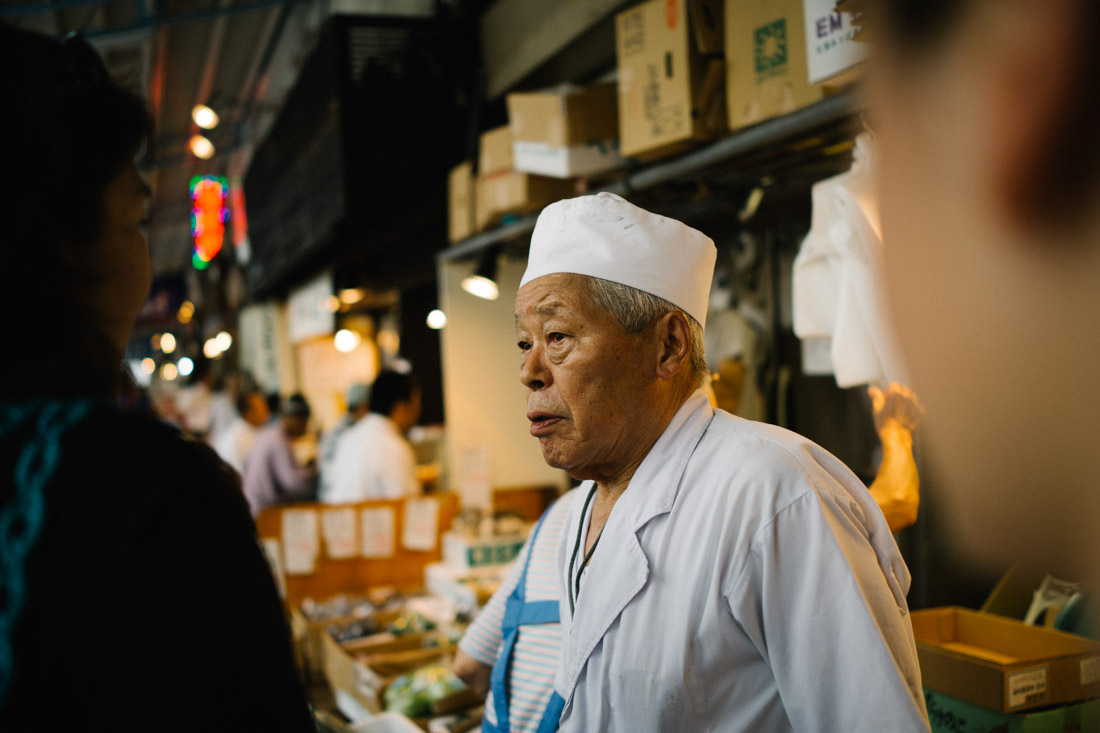
Ume-chan, owner of ramen shop Dai-ni Tsukiji Seimen-jo.
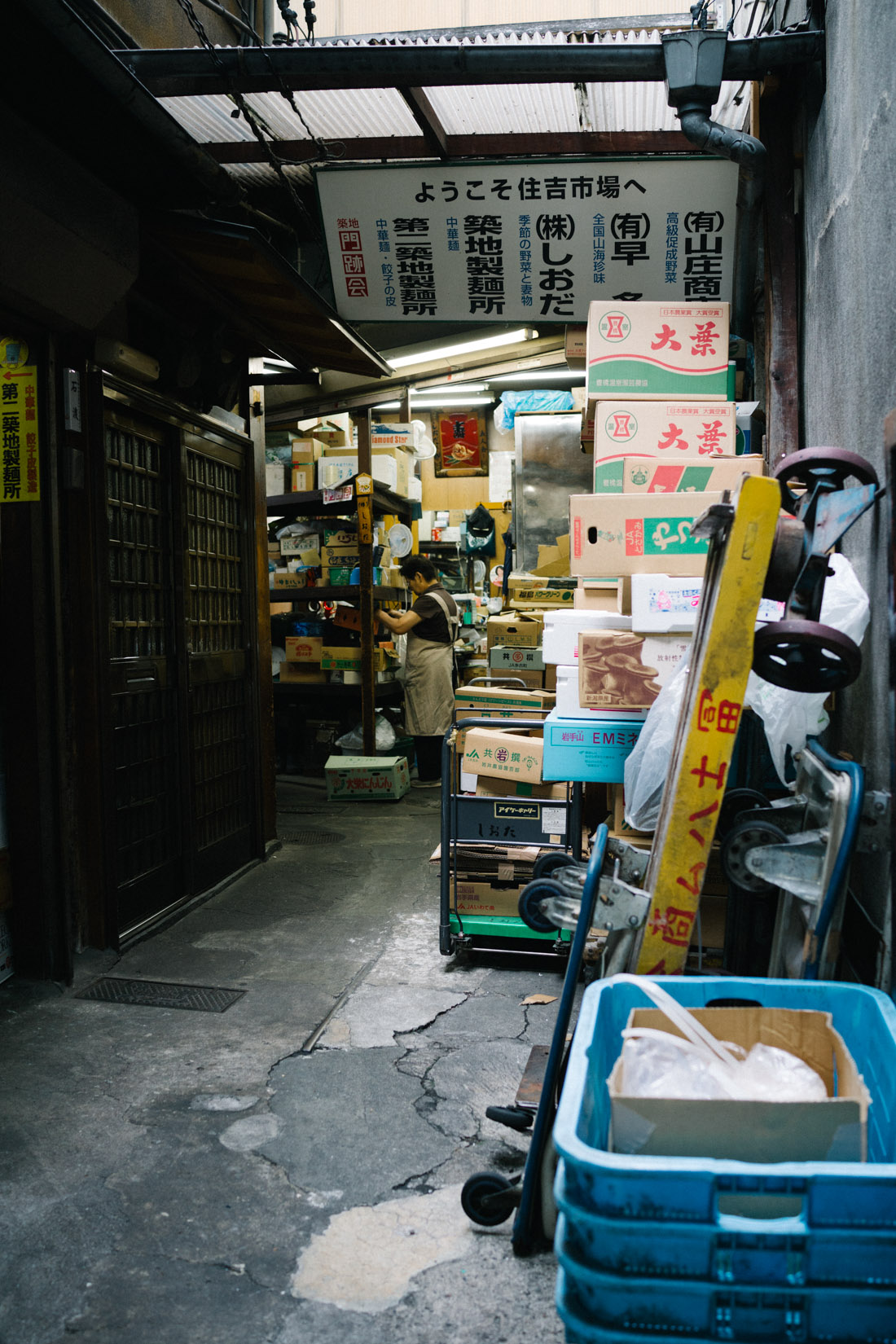
Back of the store where Ume-chan makes his noodles every morning.
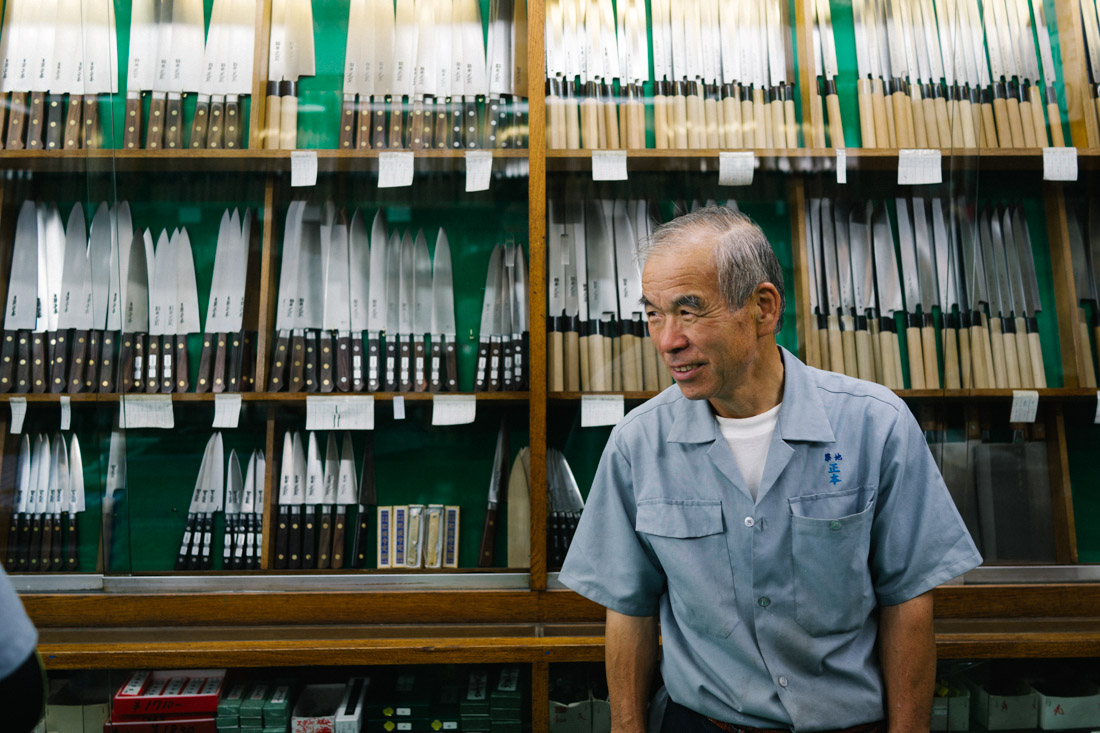
4th generation knife-maker, his ancestors made swords.
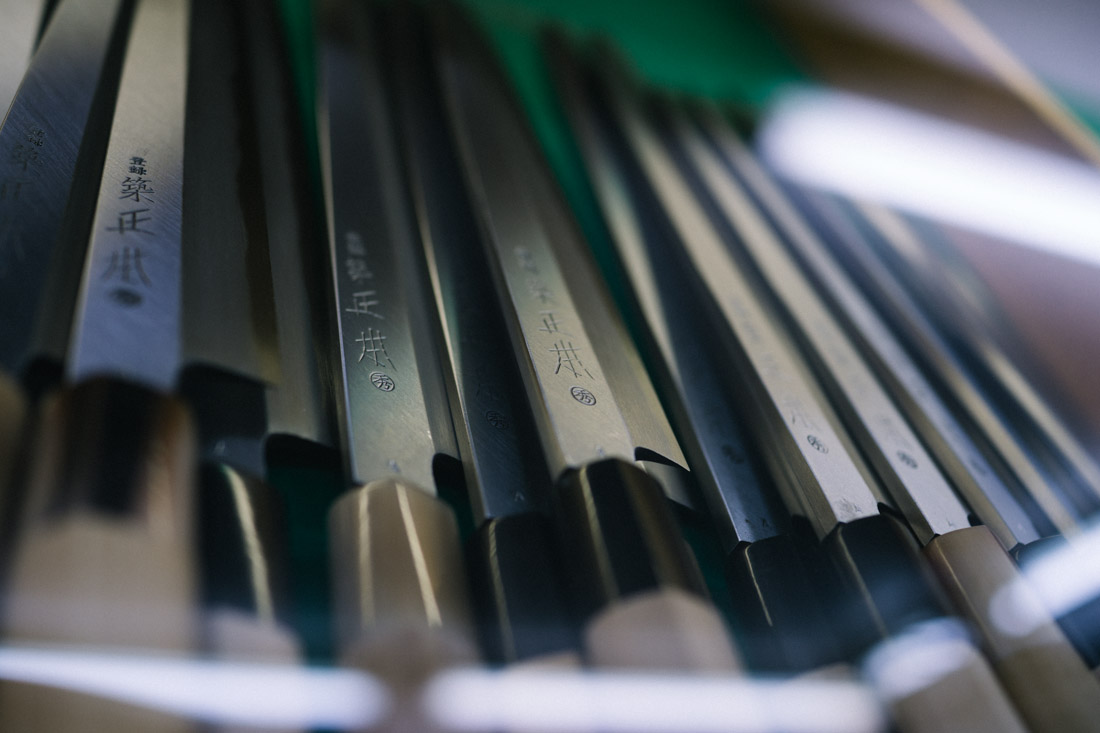
Along with their characters, they engrave whatever you want when you buy a knife.
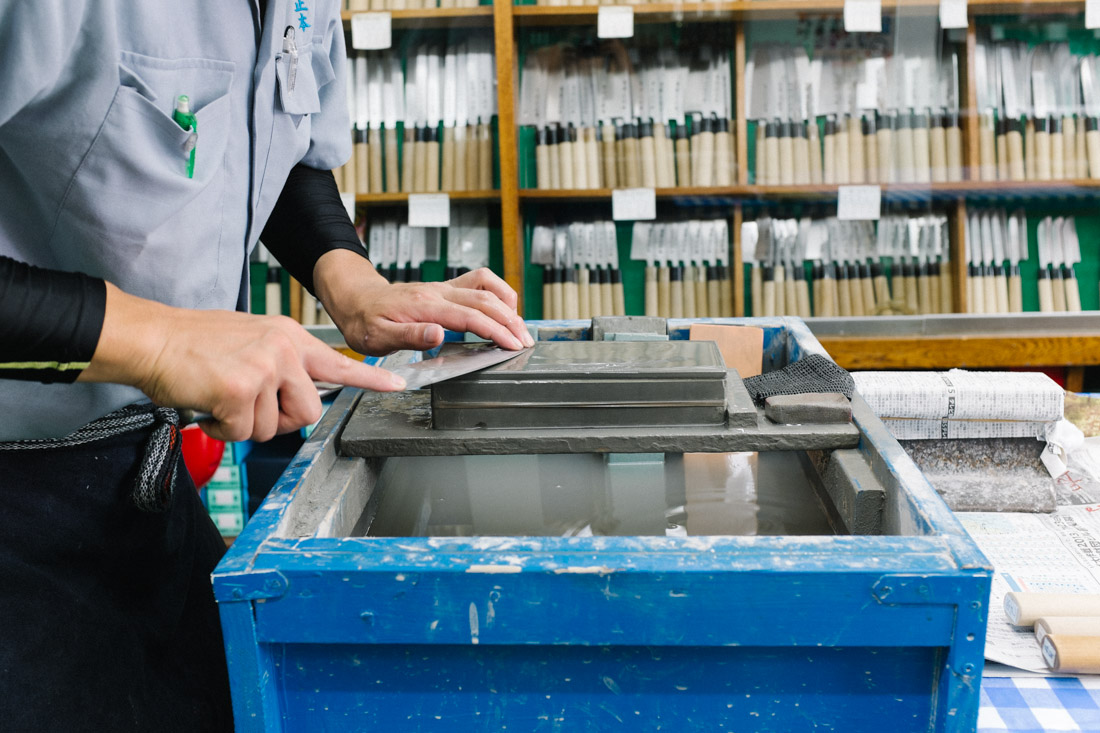
Constantly sharpening knives with the utmost respect and care.
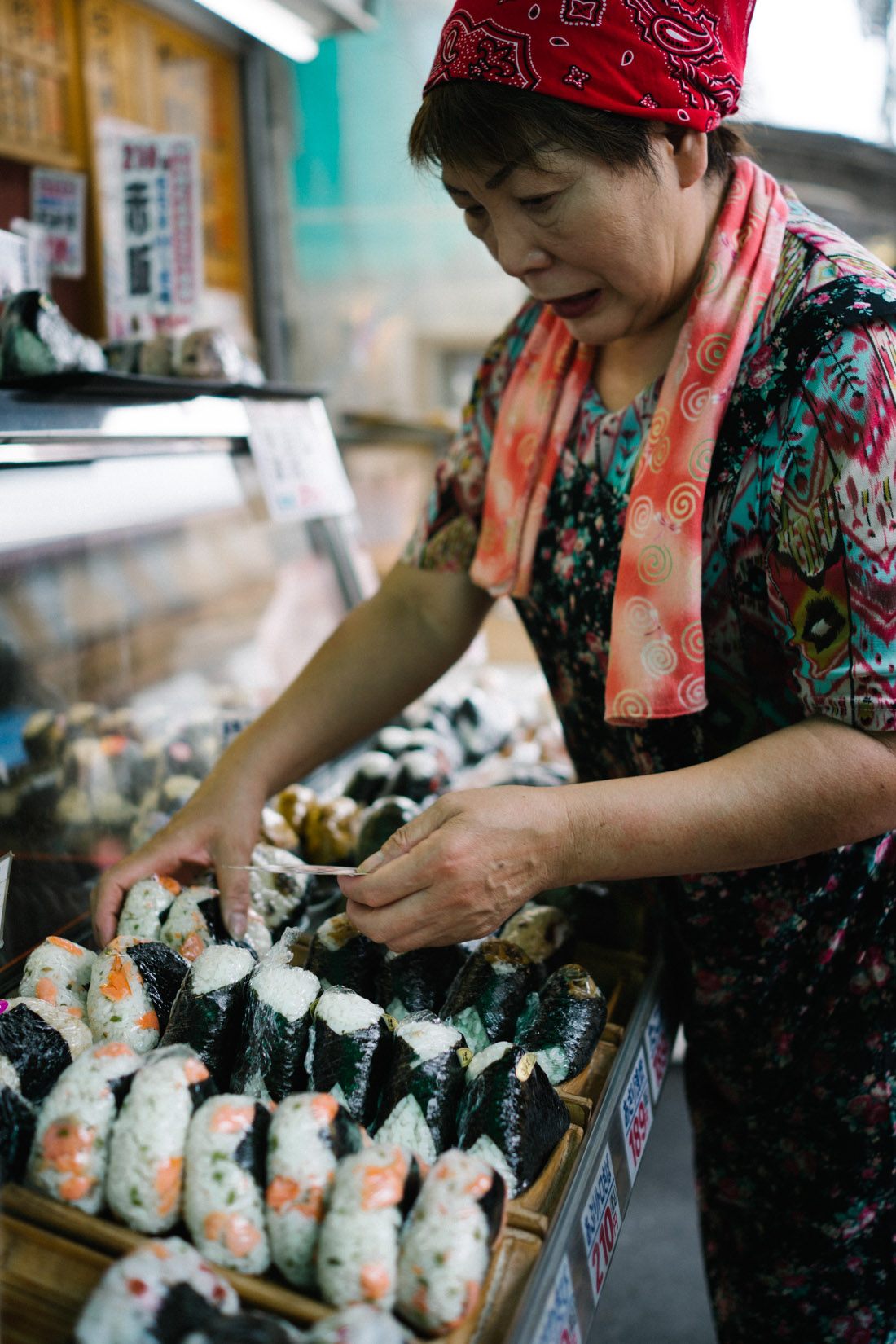
Street food stall dedicated to onigiri, the real deal.
Everyone is amazingly nice and humble, and they would all engage in conversation through Reiko, our guide, interested in knowing where we were from or if we had tried this or that. We had a chat with a dealer who made his fortune selling just to regulars, refusing to sell to the public at his small stand at Tsukiji. He has his exclusive knife sharpening man, whose sole job is to sharpen his knife at the end of the day. Another seller invited us to taste some tuna sushi with loads of wasabi — fresh and delicious.
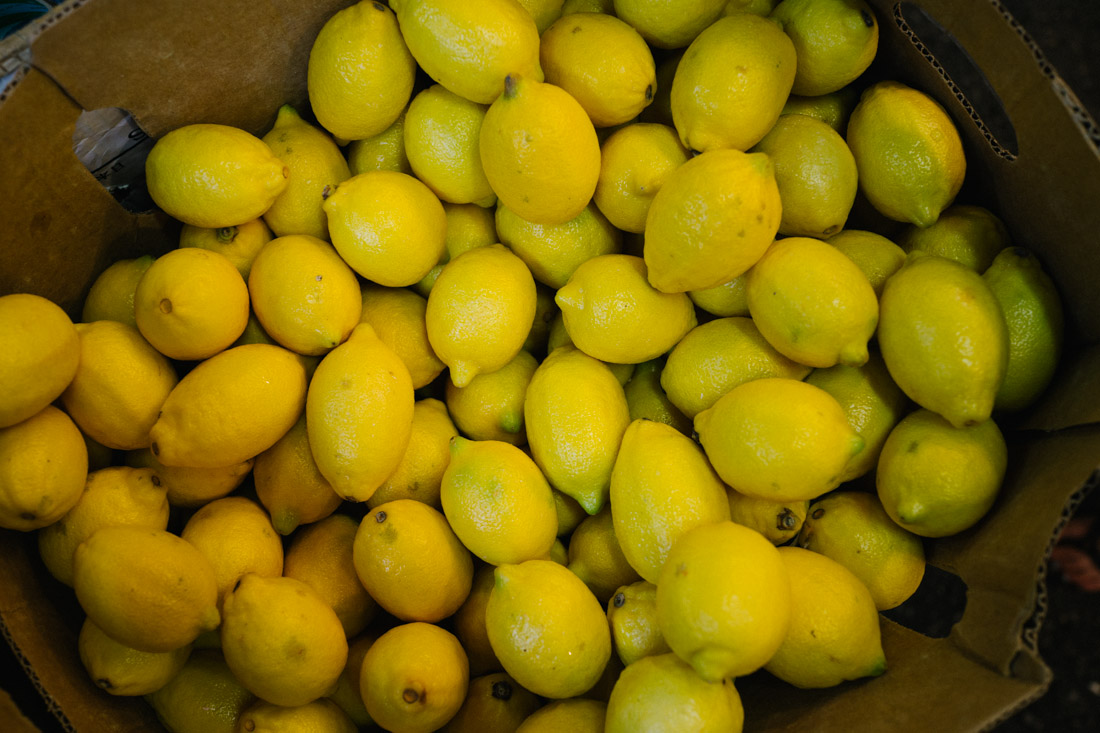
As soon as you enter the fruits and vegetable market, the sounds, smells and overall vibe changes tremendously.
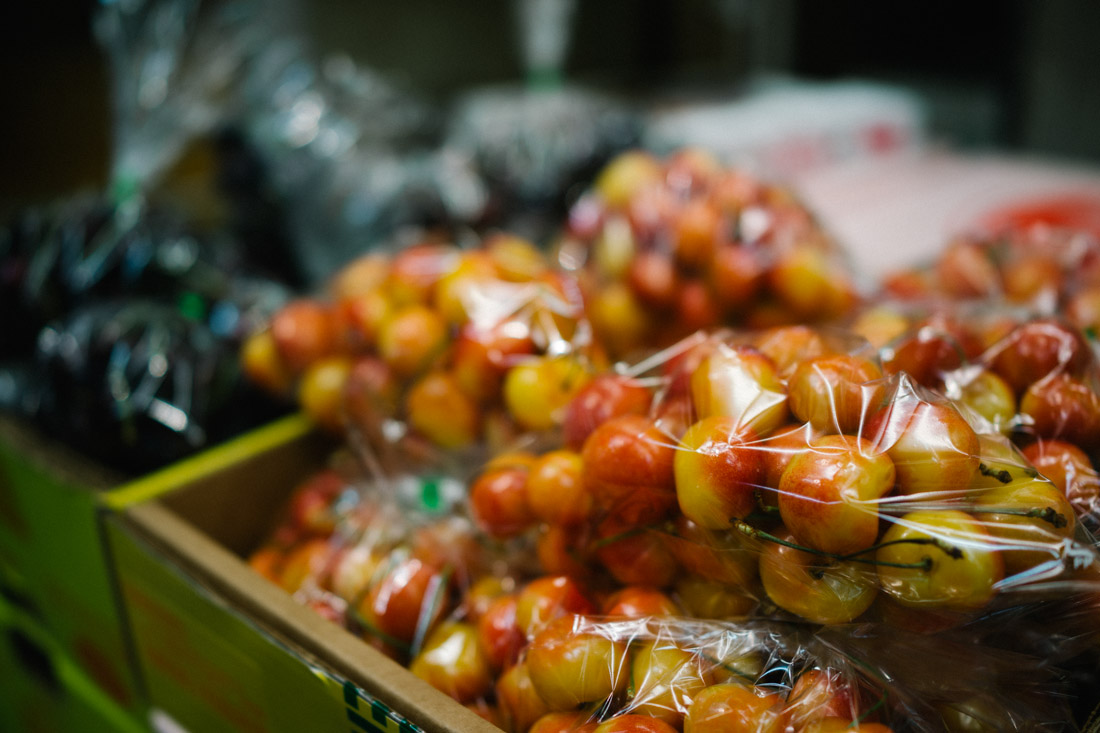
US produced cherries exclusively for the Japanese market. They are then exported back to the US at higher price.

Dragon fruit, gorgeous stuff.
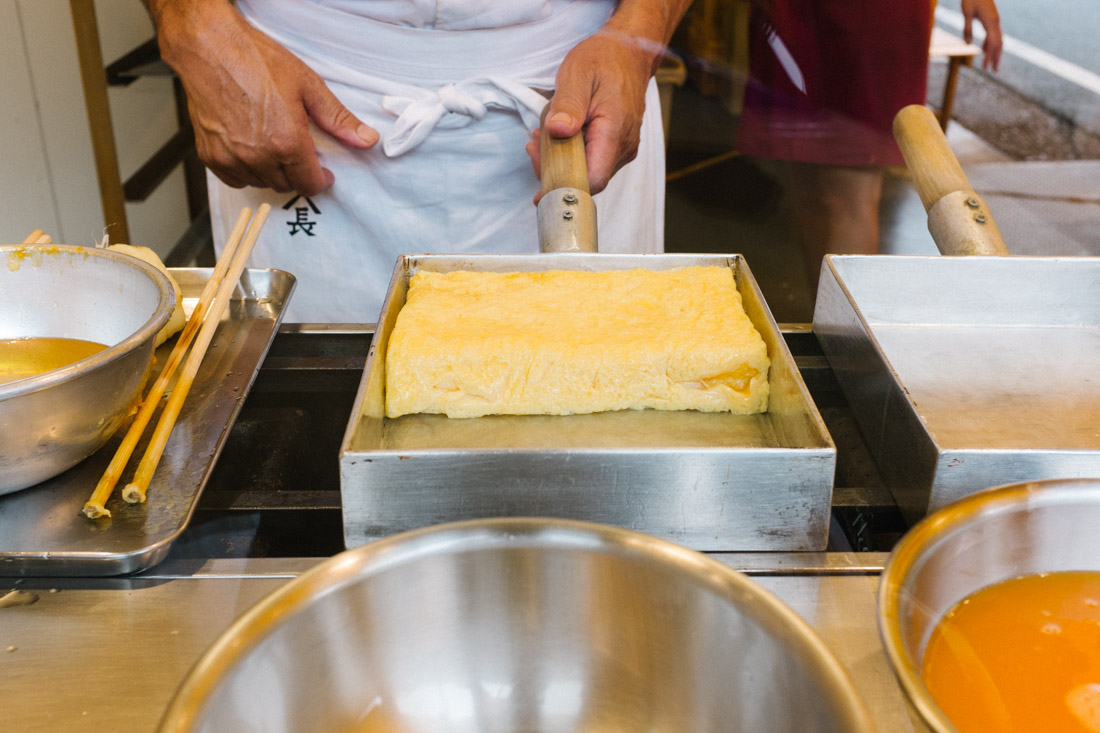
Making tamago — it’s incredibly moist and sweet!
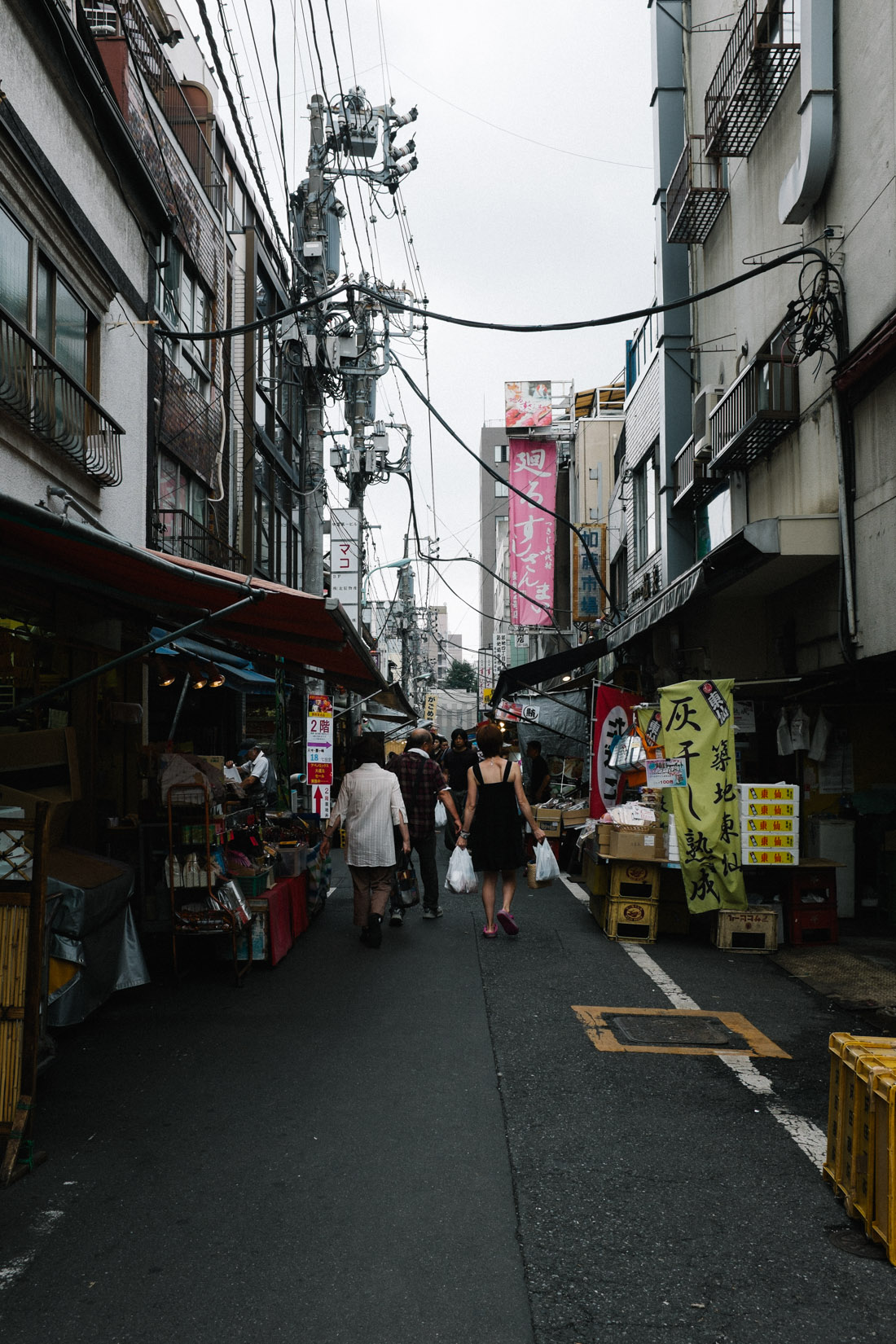
One of the many outer market streets.
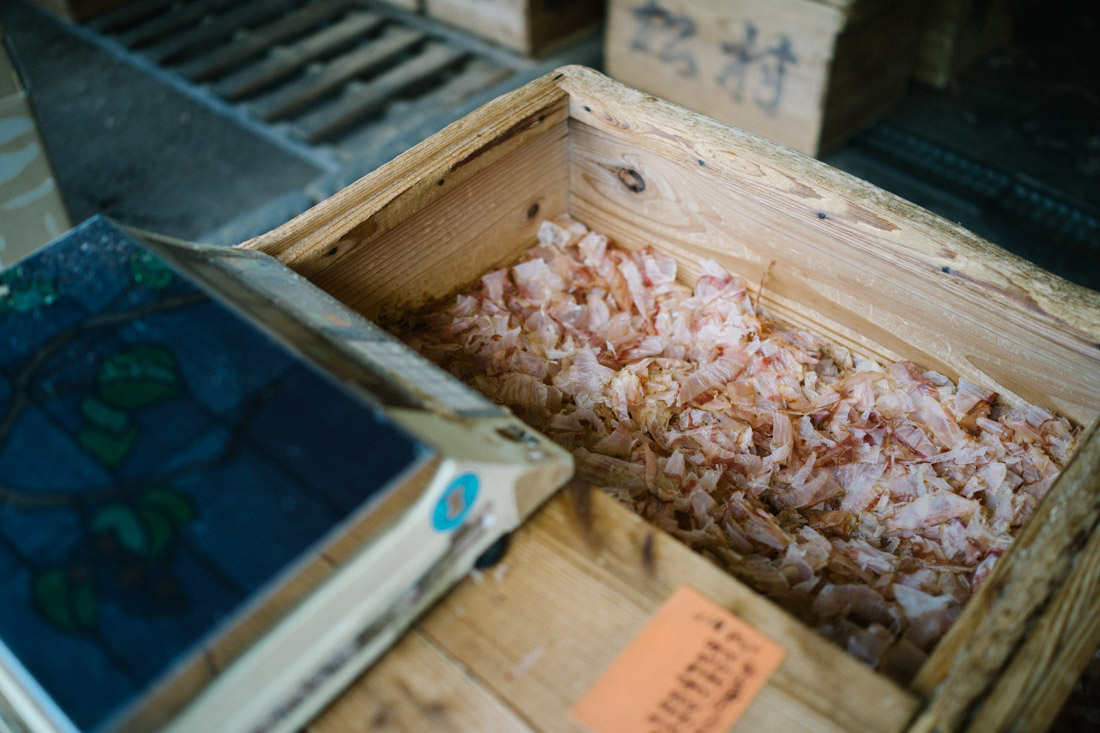
Highest grade bonito flakes, the basis of most Japanese dishes. They dry, smoke and let to ferment bonito filets for 8 months!
After the market we had a simple but scrumptious bowl of Ramen at Ippudo (Ginza), and learned that ramen at lunch is a man thing, so you barely see any women inside: “Don’t look pretty when they sweat!”, Reiko told us.
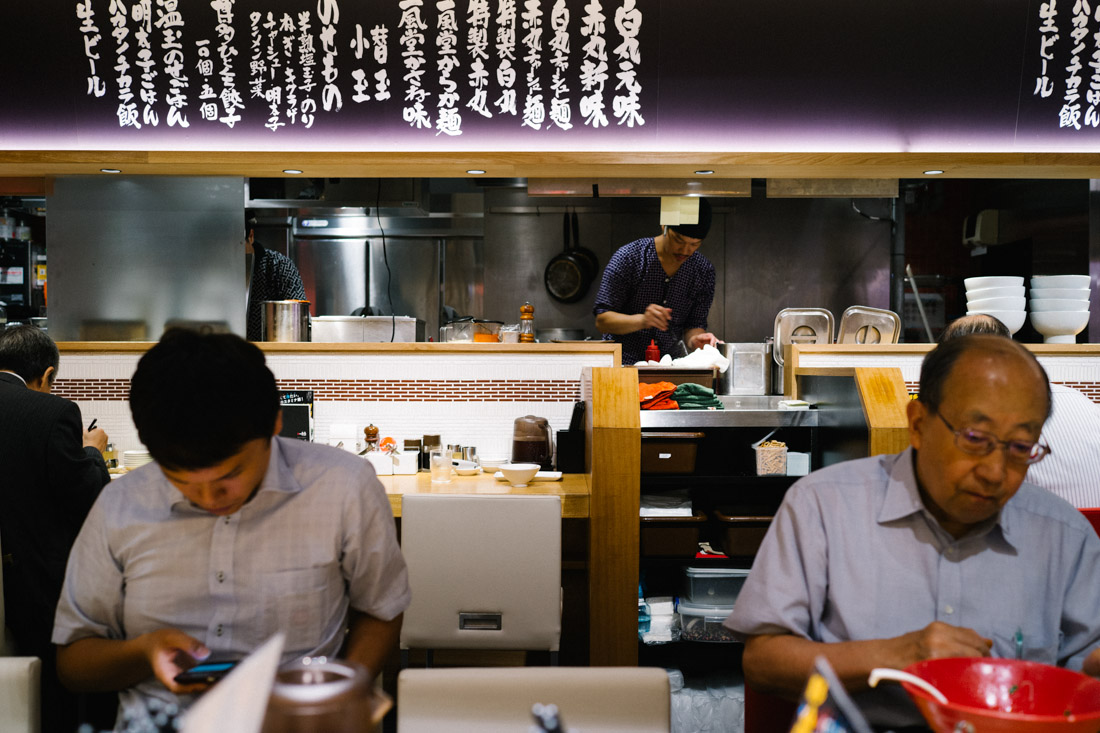
Ippudo ramen shop, fantastic little place.
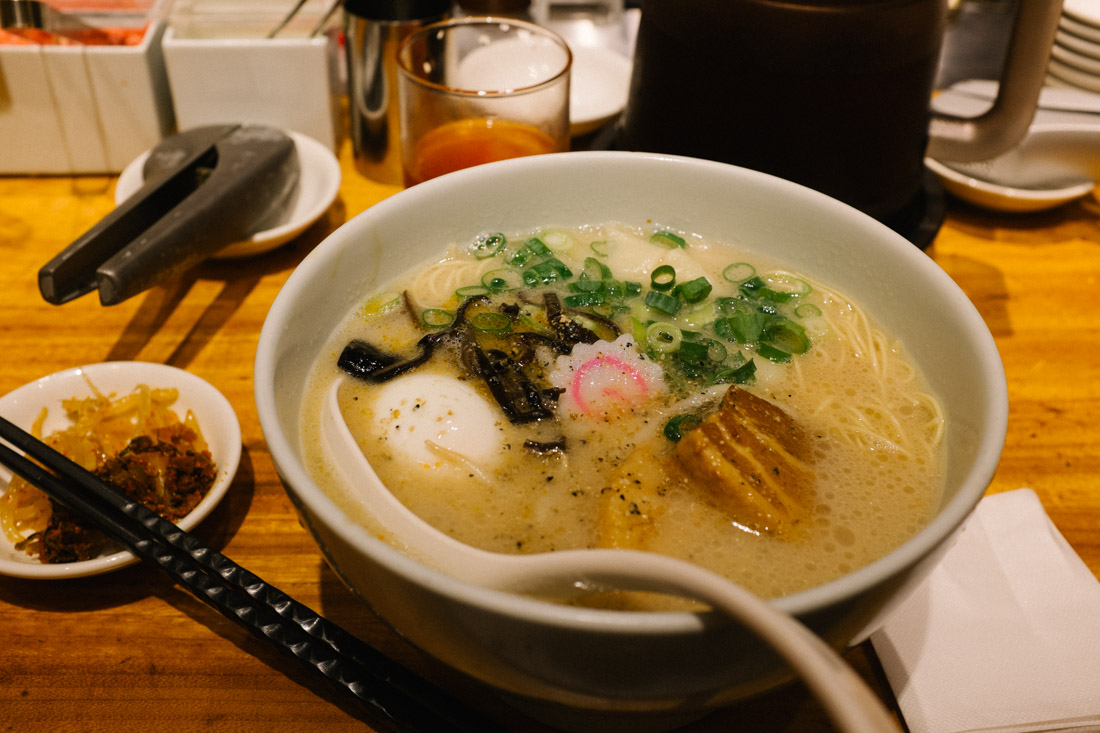
Ippudo kasane aji.
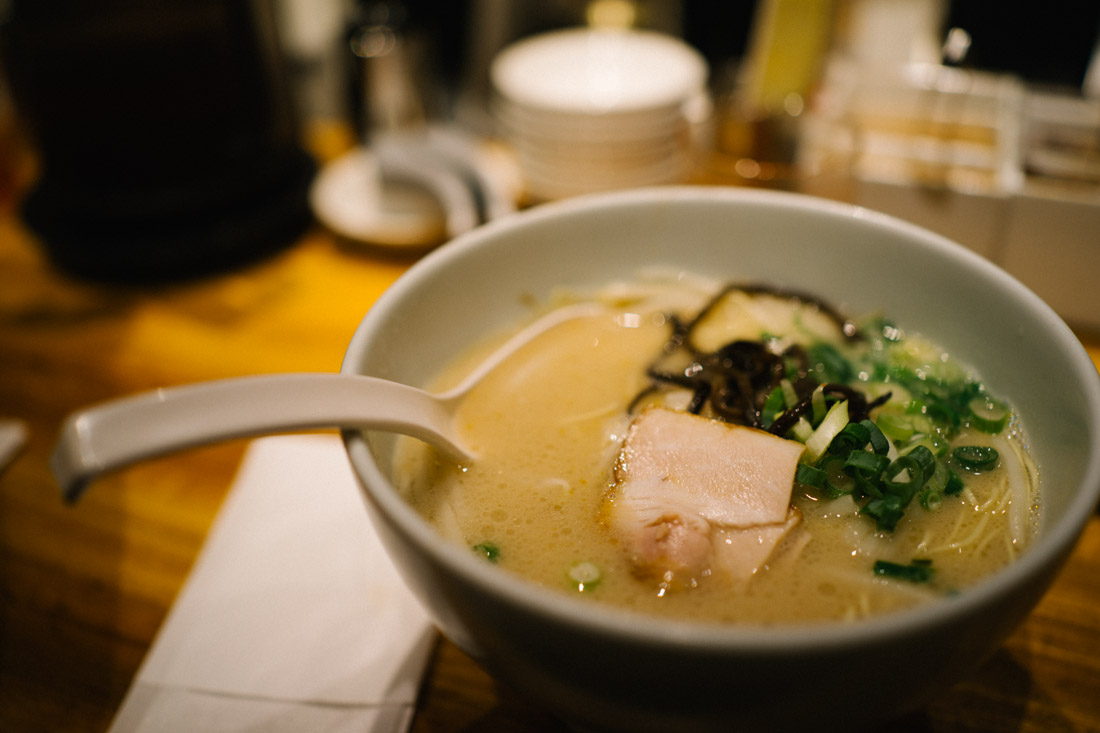
Shiromaru classic.

Leave your thoughts